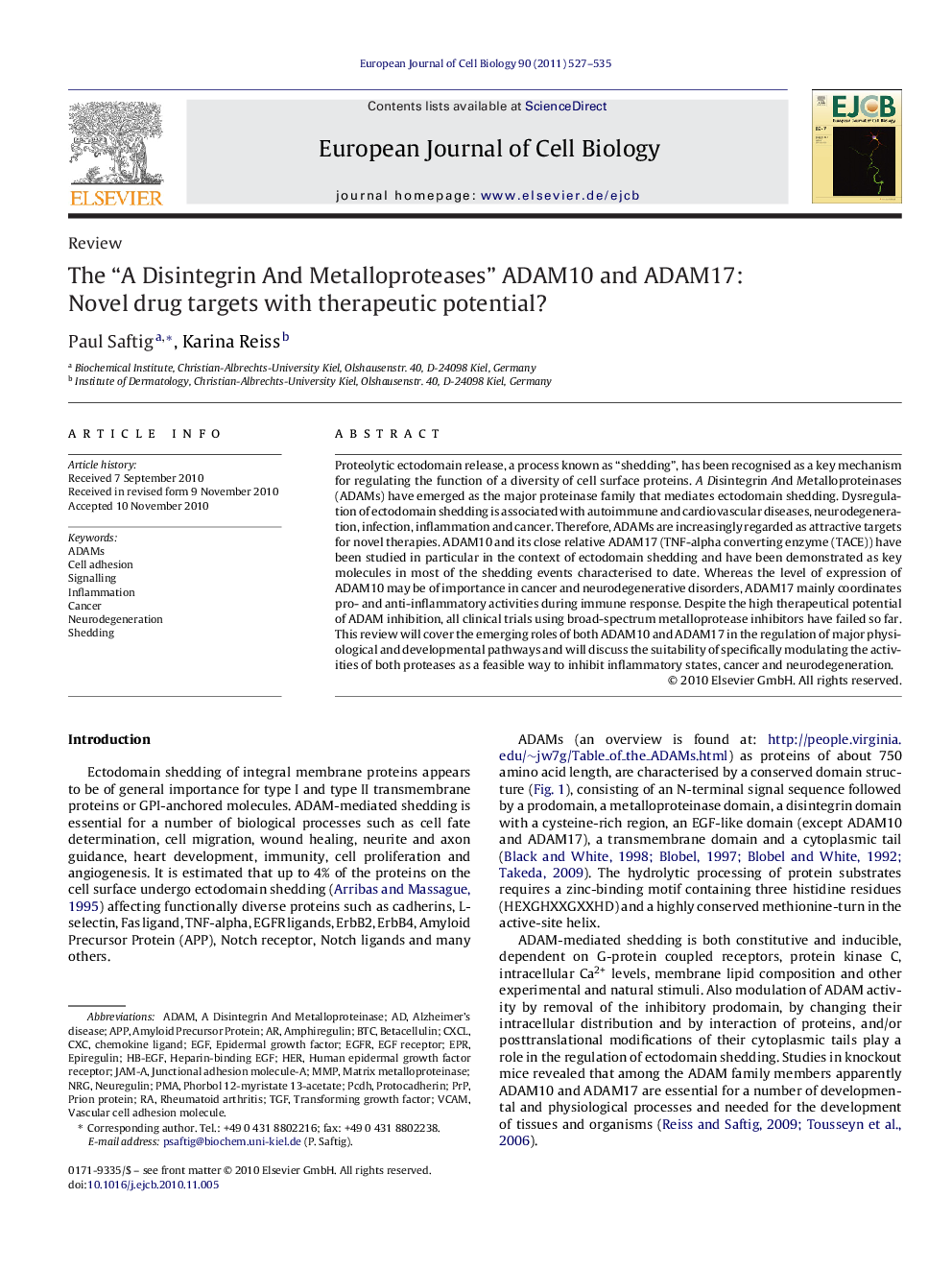| Article ID | Journal | Published Year | Pages | File Type |
|---|---|---|---|---|
| 2178701 | European Journal of Cell Biology | 2011 | 9 Pages |
Proteolytic ectodomain release, a process known as “shedding”, has been recognised as a key mechanism for regulating the function of a diversity of cell surface proteins. A Disintegrin And Metalloproteinases (ADAMs) have emerged as the major proteinase family that mediates ectodomain shedding. Dysregulation of ectodomain shedding is associated with autoimmune and cardiovascular diseases, neurodegeneration, infection, inflammation and cancer. Therefore, ADAMs are increasingly regarded as attractive targets for novel therapies. ADAM10 and its close relative ADAM17 (TNF-alpha converting enzyme (TACE)) have been studied in particular in the context of ectodomain shedding and have been demonstrated as key molecules in most of the shedding events characterised to date. Whereas the level of expression of ADAM10 may be of importance in cancer and neurodegenerative disorders, ADAM17 mainly coordinates pro- and anti-inflammatory activities during immune response. Despite the high therapeutical potential of ADAM inhibition, all clinical trials using broad-spectrum metalloprotease inhibitors have failed so far. This review will cover the emerging roles of both ADAM10 and ADAM17 in the regulation of major physiological and developmental pathways and will discuss the suitability of specifically modulating the activities of both proteases as a feasible way to inhibit inflammatory states, cancer and neurodegeneration.
